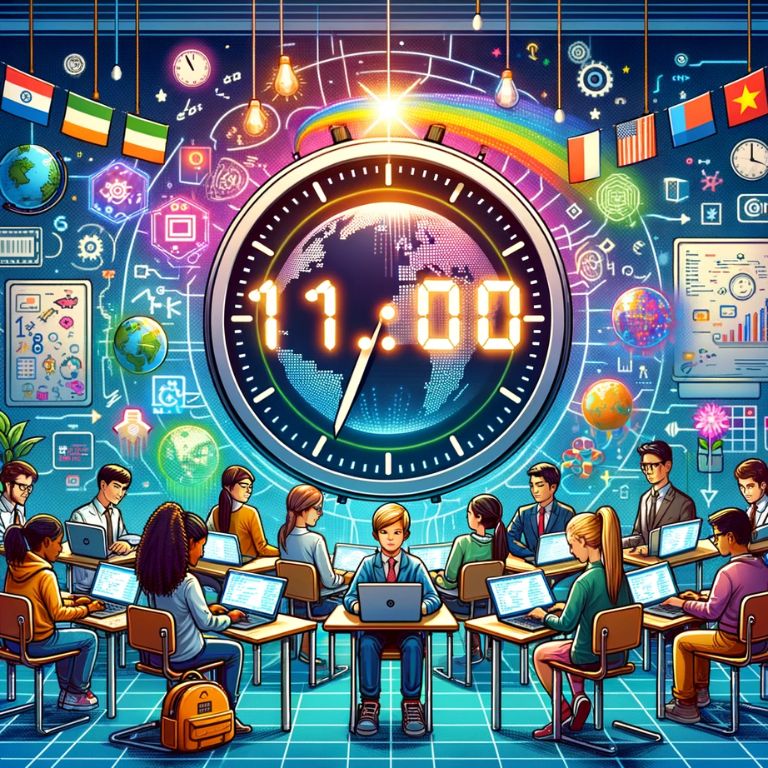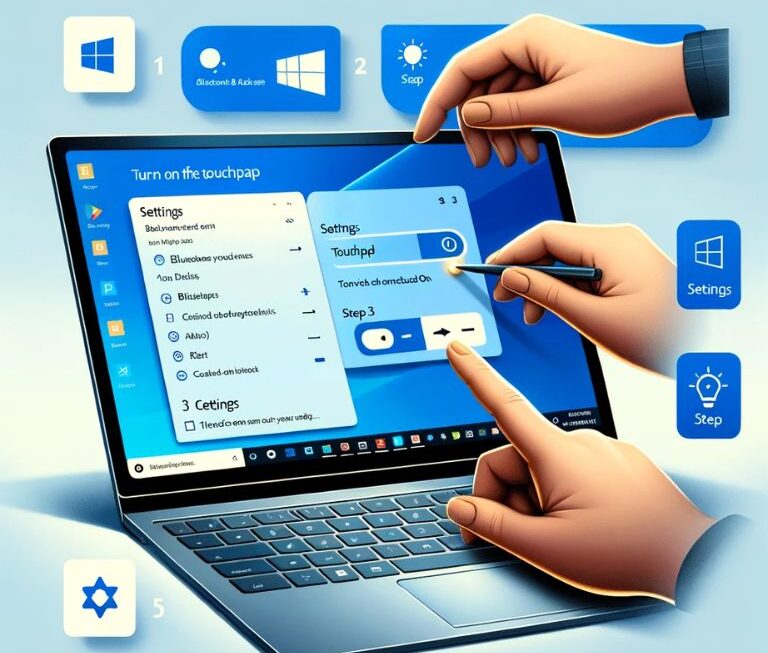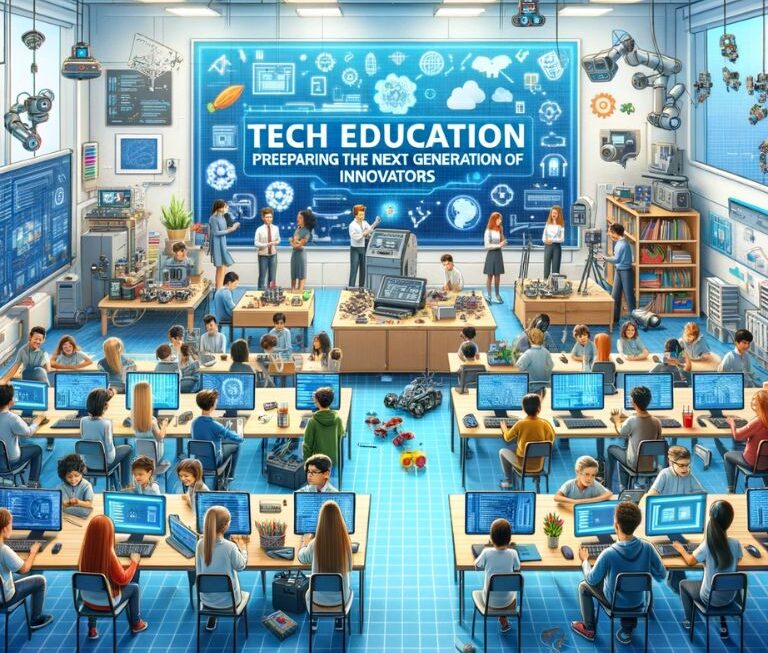The “Hour of Code,” initiated by the Association for Computing Machinery (ACM), represents a global movement aimed at demystifying the world of computer science and expanding its reach to people of all ages, backgrounds, and skill levels. This initiative, part of the larger Computer Science Education Week, encapsulates a fundamental shift in the approach to computer education, moving towards more inclusive, accessible, and engaging methods of learning and teaching computer science.
The Genesis and Vision of the Hour of Code
Launched in 2013 by Code.org, the Hour of Code gained substantial momentum through its partnership with ACM, a premier organization dedicated to advancing computing as a science and a profession. The underlying vision of the Hour of Code is to make computer science more accessible to the masses, breaking down barriers and altering preconceived notions about who can learn coding. This initiative aims to dispel the stereotypes surrounding the typical coder and to encourage diverse participation in the field of computer science.
Global Participation and Reach
The Hour of Code boasts an impressive global footprint, with millions of participants from over 180 countries engaging in coding activities. This remarkable outreach is a testament to the initiative’s universal appeal and the growing recognition of the importance of digital literacy in today’s tech-driven world. Such widespread participation is not only a marker of success but also a driving force in promoting inclusivity in computer science education.
The Unique Approach: Engaging and Fun Learning
At the heart of the Hour of Code is the belief that learning to code should be fun and engaging. The initiative offers a plethora of interactive activities, games, and tutorials, making the process of learning to code an enjoyable experience. These activities are designed to cater to learners of all skill levels, ensuring that everyone, from beginners to advanced coders, finds something that resonates with their interests and abilities.
Emphasis on AI and Creativity
A distinctive feature of recent Hour of Code events is the emphasis on creativity and the integration of Artificial Intelligence (AI). By introducing concepts of AI alongside coding, the initiative is preparing participants for the future of technology. This forward-thinking approach equips learners with the knowledge and skills necessary to navigate and contribute to an increasingly AI-driven world.
Educational Impact and Recognition
The educational impact of the Hour of Code is significant. It has inspired numerous schools worldwide to incorporate computer science into their curriculum, demonstrating the initiative’s influence beyond the hour-long coding activities. The Hour of Code has also garnered recognition from educators, policymakers, and industry leaders, who acknowledge its role in shaping the future of education.
The Impact on Global Computer Education

The Hour of Code, spearheaded by ACM, has made a profound and far-reaching impact on global computer education. This section delves into the tangible effects of this initiative, exploring its expansive reach, the diversity of its participants, and the lasting changes it has instigated in computer science education worldwide.
Transforming the Landscape of Computer Education
One of the most significant impacts of the Hour of Code is its role in transforming the landscape of computer education globally. It has successfully introduced millions of students and educators to the fundamentals of coding and computational thinking, thereby creating a more tech-savvy generation.
By the Numbers: A Global Movement
The initiative’s reach is best illustrated through some compelling statistics:
- Participants: Over 100 million students worldwide have engaged in the Hour of Code activities.
- Global Reach: The initiative has spread to over 180 countries, demonstrating its universal appeal.
- Diverse Participation: Students of all backgrounds, including significant representation from underrepresented groups, have participated, making it a truly inclusive event.
Bridging the Gender and Socioeconomic Divide
A critical aspect of the Hour of Code’s impact is its contribution to bridging the gender and socioeconomic divide in computer science. By providing accessible and engaging coding activities, it has encouraged a more diverse group of learners to explore computer science, an area traditionally dominated by a less diverse demographic.
Influencing School Curriculums
The Hour of Code has not only been a week-long event but has also had a lasting impact on educational systems around the world. Many schools have been inspired to integrate computer science into their regular curriculum, recognizing the importance of these skills in the 21st century.
Collaboration with Educational Institutions and Governments
The initiative’s success can be partly attributed to its collaboration with various educational institutions and governments. These partnerships have facilitated the integration of Hour of Code activities into mainstream education, further expanding its reach and impact.
Empowering Educators
The Hour of Code has also focused on empowering educators by providing them with resources, training, and support to teach computer science. This approach has ensured that the benefits of the initiative are sustained over time, with educators being well-equipped to continue imparting computer science education.
Innovative Learning Approaches: Creativity with AI
In recent years, the Hour of Code initiative by ACM has taken a significant leap forward by incorporating elements of Artificial Intelligence (AI) into its learning modules. This move signifies a commitment to not only teaching coding skills but also preparing learners for the rapidly evolving technological landscape where AI plays a central role.
Embracing AI in Coding Education
The integration of AI into the Hour of Code curriculum has been a game-changer in several ways:
- Enhancing Engagement: By introducing AI concepts, the initiative has made learning more engaging and relevant to current technological trends.
- Demystifying AI: For many learners, AI is a complex and elusive concept. The Hour of Code helps demystify AI, making it more approachable and understandable.
AI-Based Activities and Resources
A variety of AI-based activities have been introduced, designed to cater to different age groups and skill levels. These activities include:
- Beginner Tutorials: For younger students or beginners, the focus is on understanding what AI is and how it can be used in basic coding projects.
- Intermediate Challenges: For those with some coding experience, the challenges involve more complex AI applications, like machine learning models.
- Advanced Projects: For advanced learners, the Hour of Code offers projects that delve into sophisticated AI concepts and their practical applications.
Educator Training and Resources
Recognizing the importance of educators in this initiative, ACM has developed resources and training programs specifically focused on AI in education:
- Professional Development Workshops: These workshops are designed to help educators understand AI and how to teach it effectively.
- Curriculum Guides: Detailed guides and lesson plans are provided to educators to help them integrate AI topics into their teaching.
Impact of AI Integration
The integration of AI into the Hour of Code has had a notable impact:
- Increased Interest in AI: There has been a marked increase in interest among students in AI and related fields.
- Broader Skill Development: Students are not only learning coding but also developing an understanding of AI, which is crucial for future careers in technology.
ACM’s Educational Resources and Support
The Association for Computing Machinery (ACM) plays a pivotal role in the success of the Hour of Code initiative, not just through endorsement but by providing substantial educational resources and support. This robust framework is essential for the initiative’s widespread adoption and effectiveness.
Comprehensive Learning Materials
ACM has developed a wide array of learning materials tailored to various skill levels and interests, ensuring that everyone, from beginners to advanced learners, has access to quality educational content.
- Interactive Tutorials: These user-friendly guides are designed to engage learners in hands-on coding activities.
- Video Lessons: Featuring experts and educators, these videos provide insights into coding concepts and their real-world applications.
- Lesson Plans for Educators: Detailed lesson plans are available to help educators integrate coding exercises into their curriculum effectively.
Supporting Educators and Schools
A significant part of ACM’s contribution lies in its support for educators and schools:
- Teacher Training Programs: These programs are designed to equip teachers with the necessary skills and knowledge to teach computer science effectively.
- Classroom Resources: ACM provides a variety of resources, including software tools and educational aids, to assist teachers in the classroom.
Online Platforms and Communities

ACM has established several online platforms and communities to facilitate learning and collaboration:
- ACM Learning Center: This platform offers access to over 80,000 online books, courses, and videos, making it a treasure trove of information for both students and educators.
- TechTalks and ByteCast: These series bring computing experts to the forefront, offering insights into emerging trends and technologies.
Fostering a Global Coding Community
The global reach of the Hour of Code is partly due to ACM’s efforts in building and nurturing a worldwide community of coding enthusiasts:
- Global Events and Competitions: ACM organizes events and coding competitions that attract participants from around the world.
- Online Forums and Discussion Groups: These platforms enable learners and educators to share experiences, solve problems, and exchange ideas.
Impact Assessment and Feedback Mechanisms
ACM also focuses on assessing the impact of its educational initiatives and incorporating feedback:
- Surveys and Studies: Regular surveys and studies are conducted to gauge the effectiveness of the resources and identify areas for improvement.
- Feedback Channels: ACM encourages feedback from participants and educators to continuously refine and enhance its offerings.
Prominent Figures and Events in ACM’s Hour of Code
ACM’s Hour of Code initiative has gained considerable attention and support from prominent figures in technology, education, and government. This involvement has not only raised the profile of the initiative but also highlighted its significance in the broader context of technological education and digital literacy.
Influential Supporters and Advocates
The Hour of Code has been endorsed and supported by a range of influential figures:
- Tech Industry Leaders: CEOs and founders of major tech companies have publicly supported the initiative, emphasizing the importance of coding skills in the modern workforce.
- Educational Pioneers: Renowned educators and academic leaders have also backed the program, recognizing its potential to revolutionize computer science education.
- Government Officials: In various countries, government representatives have advocated for the Hour of Code, often integrating it into national education policies.
Highlighting Key Events
Several key events have marked the history of the Hour of Code, drawing attention to its impact and reach:
- Global Coding Challenges: These events bring together students from around the world to participate in coding activities, fostering a sense of global community.
- Special Webinars and Workshops: Hosted by ACM, these events feature experts discussing the latest trends in technology and education.
- Annual Celebrations: The Hour of Code is celebrated annually during Computer Science Education Week, with special events, coding marathons, and showcases of student projects.
Celebrating Success Stories
The Hour of Code is also about celebrating successes and breakthroughs:
- Student Achievements: Many students have showcased exceptional talent and innovation through their Hour of Code projects, some even gaining national or international recognition.
- Schools and Community Success: Schools and communities that have shown remarkable engagement and creativity in implementing the Hour of Code are often highlighted, serving as inspiration for others.
Role Models and Mentors
The initiative also focuses on the importance of role models and mentors:
- Tech Community Involvement: Professionals from the tech community often volunteer as mentors, providing guidance and inspiration to participants.
- Inspirational Stories: Stories of individuals who have been positively impacted by the Hour of Code, sometimes leading to career changes or new educational pathways, are shared to motivate others.
Impactful Collaborations
Collaborations between ACM and other organizations have been instrumental in expanding the reach and effectiveness of the Hour of Code:
- Partnerships with Educational Institutions: These partnerships help integrate the Hour of Code into school curriculums and extracurricular activities.
- Corporate Sponsorships: Support from corporations provides resources and funding, essential for the growth and sustainability of the initiative.
Challenges and Success Stories of ACM’s Hour of Code
The Association for Computing Machinery’s (ACM) Hour of Code initiative, while highly successful, has faced its share of challenges. Simultaneously, it has yielded numerous success stories that serve as powerful testaments to its impact and efficacy.
Overcoming Challenges
Some of the key challenges faced by the Hour of Code initiative include:
- Digital Divide: In regions with limited access to technology and the internet, participating in the Hour of Code has been challenging. Efforts have been made to provide offline resources and support in such areas.
- Educator Training: Ensuring that educators are well-equipped to teach coding is crucial. ACM has addressed this by offering extensive teacher training and resources.
- Curriculum Integration: Integrating coding into existing school curriculums can be difficult. The Hour of Code has worked with educational authorities to facilitate this integration.
- Maintaining Engagement: Keeping students engaged beyond the Hour of Code is important for sustained learning. The initiative encourages ongoing learning through additional resources and activities.
Celebrating Successes
Despite these challenges, the Hour of Code has celebrated numerous successes:
- Global Participation: The initiative has seen participation from over 100 million students in more than 180 countries, demonstrating its wide appeal and effectiveness.
- Diversity in Tech: The Hour of Code has made significant strides in promoting diversity in tech, with many girls and students from underrepresented communities participating.
- Policy Influence: The success of the Hour of Code has influenced policy decisions in various countries, leading to the inclusion of computer science in school curricula.
Conclusion
The Hour of Code, initiated by the Association for Computing Machinery (ACM), has revolutionized computer science education globally. It has made coding accessible to a diverse audience, breaking down barriers and challenging traditional notions of who can learn coding. This initiative has not only equipped young minds with essential digital skills but also fostered critical thinking and problem-solving abilities, preparing them for a technology-driven future.
As the initiative continues to evolve, integrating new technologies and teaching methodologies, it remains a vital force in computer science education. The Hour of Code’s success relies on the continued support from educators, industry leaders, and communities globally, ensuring its role as a transformative educational movement, inspiring and preparing generations for the digital age.




